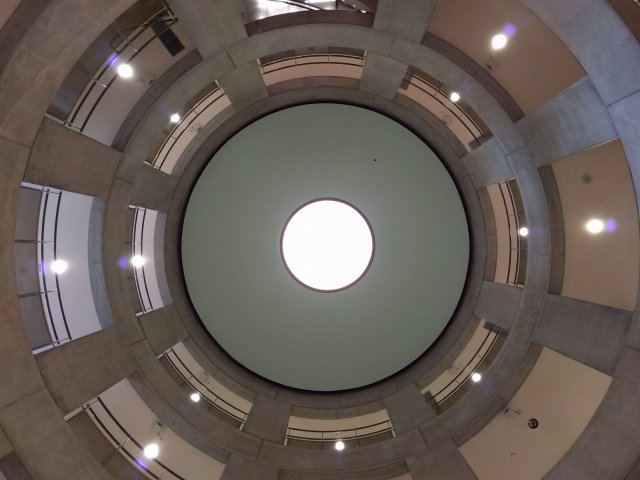Opened in 1995 and designed by
Philip H. Carter Architect, the
Lillian H. Smith Library in downtown Toronto is one of Toronto’s most unique libraries for both its content and architecture. In respect to content, the library combines the requirements of a special collections reference library with the functions of a neighbourhood branch library. At the heart of the library is a number of special collections, including rare science fiction, fantasy, and children's literature. Its unique architecture is a reflection of these special collections, employing a lively mix of evocative allusions and details which reflect the spirit of the library’s holdings: fantastical, whimsical and fun.
The Lillian H. Smith library belongs to an architectural style known as Postmodern architecture, a response to the perceived concrete and glass coldness of the Modernist movement. Postmodernism proposes architecture that is funny, warm and engaging. Formally, it is characterized by sculptural forms, historical references, the use of ornamentation, and sensitivity to context. Many postmodernist buildings are also quite playful in nature, embedding humourous elements and historical allegories aimed to engage and amuse its users. In the Lillian H. Smith library every detail has been carefully crafted to balance a whimsical spirit with the functional needs of a special collections library.

Photo Credit: J. Squires
From the exterior, the Lillian H. Smith library is a fantastical combination of whimsy, context sensitivity, and historical allegories. Typical of postmodern architecture, it borrows in shape, material, and ornamentation from a variety of historical sources in order to tell its story. Its volume is perceived as a solid mass firmly planted onto the site, its walls extending to the edge of the property line to continue the existing street wall. Its appearance is sculptural and castle-like, with a symmetrical front visually divided into two towers peaked by copper-seamed roofs. Its solidity echoes that of the 1908 University of Toronto building across the street, current home of the John H. Daniels Faculty of Architecture, Landscape, and Design, while the yellow brick façade is reminiscent of the characteristic Don Valley bricks of old Toronto.
On approaching, a majestic griffin, a mythological protector of treasures and priceless possessions, and a winged lion guard the arched entrance to the library. The arch references the Richardsonian Romanesque arches of nearby local landmarks such as Toronto's Old City Hall, Old Vic at Victoria College, and many Annex houses. The creatures are the work of Toronto artist Ludzer Vandermolen, modeled after designs by Phillip Carter. Smaller animals are tucked around each sculpture, including a mouse, an owl, and a fox.

Photo Credit: J. Squires
The depth of the entryway punctuates the impression of a solid, sturdy mass—entering the library is like entering a castle. Inside is a spacious cylindrical atrium ringed by a stair, the clear, symmetrical geometry making the library's organization clear. Walking up the curved stair is a slow progression through the spaces of the library, allowing peeks into stacks, busy seating areas, and some of the collections. Glass separating the atrium from spaces allows for visibility but also carefully controlled climate around the rare collections.
The third floor holds the Merrill Collection of Science Fiction, Speculation, and Fantasy and the fourth floor, at the very top of the staircase, holds the Osborne Collection of Early Children's Books. Display cases show a curated selection from the collection.

Photo Credit: J. Squires
Its intent may have been to fit in, but soon the library will stand out. Developments along College Street have already demolished several older structures and the street will feel quite different once these projects are completed. The library, solidly guarding its books with its mythological creatures and peaked copper roof, will soon stand out in its own right – a whimsical castle for fantastical books in the heart of Toronto.
In 1997 the Lillian H. Smith Library was awarded an
OAA Award Design Excellence Honourable Mention, celebrating the appropriateness of its playful postmodern vocabulary and the intricate program of housing numerous special collections.